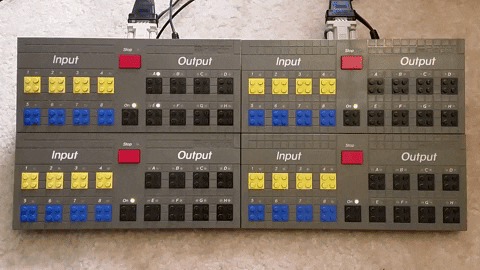Many LEGO 9 volt elements are compatible with the control lab, mainly determined by their electrical connection. The classic 9 volt connector looks like a 2x2x2/3 brick with electric contacts on the studs. Power Functions motors and lights are also compatible, and can be connected by using the Power Functions Extension Wire 8886. Incompatible elements are from the later control systems: NXT, EV3, Powered Up, Boost, and Control+.
For a good overview of LEGO motors see Philippe Hurbain’s motor comparison.
For a good overview of other compatable elements and sensors, see Tom Cook’s website.
Multiple control labs can be used together for larger projects, limited only by the amount of serial ports one has to connect to them with.

The source code for this example is in MultipleControlLabIT as the testOperatingInTandem() test.
LEGO®, DACTA®, TECHNIC®, and MINDSTORMS® are trademarks and/or copyrights of the LEGO Group, which does not sponsor, authorize or endorse this software.